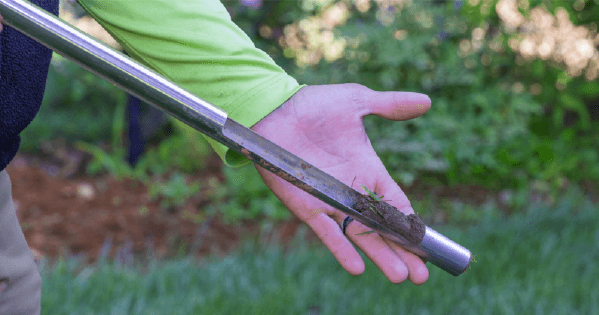Complete Pythium Blight Guide

There is a summertime invader to be wary of that can kill large areas of Georgia turfgrass in a matter of days. Pythium Blight, one of the most common lawn diseases, is highly spreadable in the hottest, most humid time of the year–June through September. Simply Green Lawn Care experts aim to keep Georgia grasses lush, healthy, and green, but certain factors, like overwatering, invite diseases to attack. What does it look like? Where does it come from? How does it spread? How can it be prevented (or treated if your lawn is already infected)? Keep reading to learn more about this fungus and its behavior so your lawn does not fall victim to its effects.
What is Pythium Blight?
Pythium Blight is a fungal disease that kills turfgrass. It is also known as cottony blight, for its sometimes fluffy white texture, or grease spot because of its black or purple circular shape when it first appears. The disease is most common in warm, humid weather conditions. Growth is enhanced when grass is saturated for 12 or so hours for several days in a row. If left untreated, Pythium Blight can cause significant damage to your lawn.
What does Pythium Blight look like?
The first symptoms of Pythium Blight are dark circular patches of grass that can range in size from a few inches to several feet in diameter. The patches may have a greasy or slimy appearance, hence the name “grease spot.” In the early morning, the affected grass may be covered with a white or gray cottony growth, which is the fungus that causes the disease. This white fluffy buildup gave Pythium Blight its alternate nickname, cottony blight.
What causes Pythium Blight?
Pythium Blight in the United States is typically an oomycete pathogen called Pythium aphanidermatum. This disease thrives in warm, humid conditions, and can spread rapidly in moist environments. Overwatering, poor soil drainage, and compacted soil are all factors that can contribute to the development of Pythium Blight. oomycete
How does Pythium Blight spread?
Pythium Blight can spread through a lawn within days. The fungus can be spread through contact with infected grass clippings, shoes, equipment, or by wind or rain. The disease can also be spread by poor water management, such as overwatering or watering at the wrong time of day. It’s best to water in the early morning hours. In addition, Pythium Blight can spread from adjacent areas that are infected with the disease.
How can Pythium Blight be prevented?
Preventing Pythium Blight involves several practices that promote a healthy lawn. First, avoid overwatering your lawn, especially during hot, humid weather. Water in the early morning so that the grass has time to dry before the evening. Ensure proper soil drainage by aerating your lawn regularly and avoiding compacted soil. Fertilize your lawn regularly to promote healthy growth and consider using a slow-release fertilizer to reduce stress on the grass. Finally, avoid walking on your lawn when it is wet, and disinfect your lawn equipment regularly.
How is Pythium Blight treated?
If you suspect that your lawn has Pythium Blight, it is important to act quickly to spare your lawn from significant damage. A professional lawn care service can provide effective treatment options, but there are also remedies homeowners must practice that will ensure a cure. Simply Green Lawn Care Plus experts can apply fungicides, improve soil drainage through aeration and apply low amounts of nitrogen in the spring when new roots are forming. Homeowners can do things like remove affected grass and put down new seed, water less often, and reduce mowing frequency and height.
Simply Green experts are focused on creating a healthy lawn and educating homeowners on how to avoid conditions like Pythium Blight. Technicians can also help diagnose the problem correctly if you believe your lawn has been infected.
Image contributor: Lee Burpee | Center for Urban Agriculture, UGA https://ugaurbanag.com/brown-patch-and-pythium-blight/
About Simply Green Lawn Care

Simply Green aims to provide the highest quality lawn care, mosquito control, and lawn pest control services to Georgia residents.
We are locally owned and operated which allows us to be accessible, attentive, and responsive for customers in Georgia.
Our well-trained team is easy to work with and determined to exceed expectations.
All our plant health care specialists are Georgia Department of Agriculture Certified and maintain their Category 24 applicators license.


